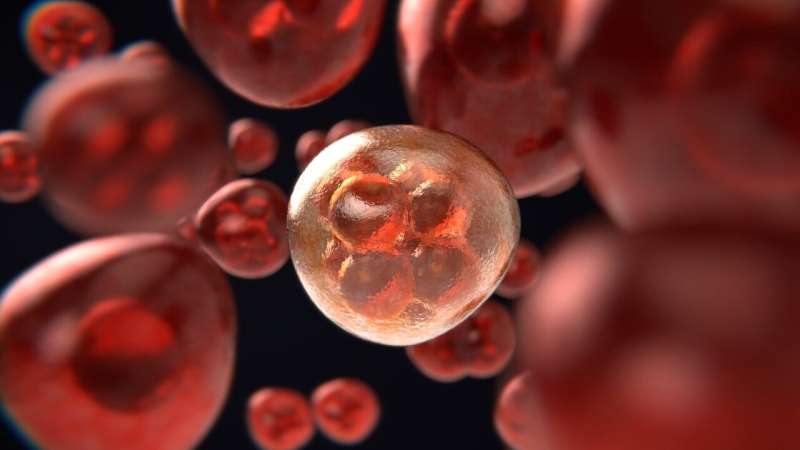Coating cancer cells with silica to create a vaccine that energizes an immune repose to tumor development

A team of researchers working at the University of New Mexico Health Science Center has found some success in creating a cancer vaccine by coating cancer cells in silica and injecting them into test mice. In their paper published in the journal Nature Biomedical Engineering, the group describes their work with creating personalized cancer vaccines and how well their efforts are working during testing.
A vaccine against cancer, in any or all of its forms, is a major goal of medical scientists. Some progress has been made—a vaccine that fights HPV, for example, has been found to be a very effective way to prevent women from developing cervical cancer. But much more work needs to be done before a vaccine can be made that works directly against cancerous tumors—either preventing their formation or eradicating them once they have already formed. Most such research is based on the idea of stimulating the immune system in ways that will make it more aggressively go after cancer cells.
Unfortunately, as the researchers on this new effort note, the body does not express universal tumor antigens that can be used for such a vaccine. In their work, they are building on prior efforts that have shown that autologous tumor cells (cells collected from the same patient) may be used to create polyclonal individualized vaccines directed at certain types of cancers. This gets around the problem of having to find a universally expressed antigen.
To that end the researchers have been trying a new approach that involves using autologous tumor cells coated with silica—more specifically, by applying cryogenic silicification of tumor cells. The process involves preserving tumor antigens recovered from a patient by covering them with a very tiny layer of silica—a method that preserves the antigens in a way that makes them available for use later—that is followed by adding a pathogen mimicking coating. The final coating serves to activate dendritic cells that stimulate antigens to T cells.
Source: Read Full Article
